45 how to read food labels carbohydrates
Learning To Read Labels :: Diabetes Education Online On a nutrition food label, subtract the fiber from the total carbohydrate amount. When you read food labels, the grams of sugar are already included in the total carbohydrate amount, so you do not need to count this sugar amount separately. The grams of sugar listed include both natural sugars, from fruit or milk, and added sugars. On a nutrition food label, the total carbohydrate includes the sugar. Some Nutrition Facts labels may also list sugar alcohols under total carbohydrate. How to Read a Food Label | Atkins But once you know the secret to figuring out how many carbs really count, the labels will become easy reading. Backing into a Carb Count. Almost everything displayed on the Nutrition Facts panel is based on specific laboratory procedures, called assays, regulated by the FDA. The quantity of fat, protein, ash and water can all be directly and ...
How to Read Food Labels | Your Low Carb Hub The below label shows there are 4.3g of carbs in a 15ml serving size which is equivalent to one tablespoon. 3.4g of this is sugar. There is 22.7g of sugar in 100ml, that's 5.6 teaspoons of sugar. The World Health Organisation (WHO) recommends no more than 5-10 teaspoons of added sugar in an entire day. Be aware of hidden sugars.
:max_bytes(150000):strip_icc()/carb-counting-and-diabetes-5209223_FINAL-9796df35fa38420baec37a37c3c8347e.jpg)
How to read food labels carbohydrates
How to Read the New Food Label - The Johns Hopkins Patient Guide to ... The percent daily value (%DV) can be used as a quick guide to the food label. Try the 5/20 rule when reading a label. Think about 5% or less as low for any nutrient and 20% or more is high for any nutrient. The %DV is a great way to compare food products if the serving size is the same. Fiber is the nutrient on the label that you want to aim ... How to Understand and Use the Nutrition Facts Label | FDA It's important to realize that all the nutrient amounts shown on the label, including the number ... Is it Keto? How To Read Food Labels - 3 Easy Steps Nutrition labels will provide a great deal of information that will help in your low carb journey. Check out the label below. Step 1 - How to read food labels: Check the serving size. Serving Size (highlighted in red above): if you are counting carbs then you need to know how much of the food item will have the number of carbs, fiber, protein ...
How to read food labels carbohydrates. How to read food labels | healthdirect Energy: A kilojoule is a measure of energy. To lose weight, you need to eat and drink fewer kilojoules (kJ) than you use. You should limit your intake of discretionary or junk foods — i.e. those that have more than 600kJ per serve. Healthy Food Choices Made Easy | ADA Eat good to feel good. Healthy eating doesn't have to be complicated. By using these simple tips, you can learn how to create an eating plan that is good for your body. Learn the keys to healthy eating. Knowing what to eat can be confusing. Everywhere you turn, there is news about what is or isn't ... How To Read Nutrition Labels (Like a Pro) - Ditch The Carbs Firstly you need to understand the difference between total and net carbs. TOTAL CARBS = sugars + starches +fibre NET CARBS = total carbs - fibre Carbohydrates will be on the nutrition label are often broken down into carbohydrates, sugars, starch, and fiber. However, each brand may display its nutritional contents differently. Understanding Food Nutrition Labels | American Heart Association Remember that the information shown in the label is based on a diet of 2,000 calories a day. You may need less or more than 2,000 calories depending upon your age, gender, activity level, and whether you're trying to lose, gain or maintain your weight. When the Nutrition Facts label says a food contains "0 g" of trans fat, but includes ...
Low Carb Guide to Understanding Nutrition Labels - Virta Health Sugar should be zero as often as possible (1-2g at most). Fiber is a carb and should be included in your total for the day (initially 30g or less). Again, pay attention to the serving size. Something might be low in carbs, but if you eat 3 or 4 servings, you can easily go over your daily limit. 7. Reading Food Labels | ADA - American Diabetes Association The Nutrition Facts labels on foods are really the key to making the best choices. We'll cover the basics so that these labels make shopping easier for you. You've heard it all. From carb-free to low-carb, to whole and empty carbs, it's hard to know what it all means. Blood sugar highs and lows aren't always easy to understand. Reading labels | Diabetes UK Key points Always look at the 'total carbohydrate' on the label when carb counting. This will make sure you are counting both the complex (starchy) and simple (sugary) carbs in your food. Both will raise your blood glucose (blood sugar) levels, and need to be matched with insulin. How to Read Food Labels & Count Carbs | Allulose Keep a Check on Protein, Carbs and Sugars. As additional nutrients, most Americans get enough protein, but the Academy of Nutrition and Dietetics recommends consumers eat only moderate portions of lean meat, poultry, fish, eggs, low-fat milk, yogurt and cheese, along with beans, peanut butter and nuts. Carbohydrates can come from sugars ...
Food Labels and Counting Carbs - dummies Total Carbohydrate is listed in grams. Because %Daily Value is written in bold and off to the right side of the label, and lined up neatly with the actual amount, it is easy to allow your eye to zero in on the %Daily Value rather than the actual amount in grams. Food label reading guide | Nutrition Australia Most food or drink packages have a Nutrition Information Panel (NIP) which tells you the quantity of various nutrients a product contains per serve and per 100g or 100 ml. The NIP will also provide information on the serve size and the number of servings per packet. When reading the NIP: • always read the per 100g column to compare similar ... Feeding Your Cat: Know the Basics of Feline Nutrition ... Since animal-based protein (meat and organs) is more expensive than carbohydrates (grains/potatoes/peas), pet food manufacturers raise the carbohydrate levels in these foods making them very species-inappropriate and unhealthy. An optimal weight loss diet should be: high in protein (over 40% of calories), moderate in fat (under 50% of calories), Food Labels | CDC - Centers for Disease Control and Prevention Check the Serving size first. All the numbers on this label are for a 2/3-cup serving. This package has 8 servings. If you eat the whole thing, you are eating 8 times the amount of calories, carbs, fat, etc., shown on the label. Total Carbohydrate shows you types of carbs in the food, including sugar and fiber.
How to Read Nutrition Labels: Fat Content, Carbs & What To Look For Total Carbohydrate The Nutrition Facts label lists three requirements for carbohydrates: Total Carbohydrates, Dietary Fiber, and Total Sugars. This section of the label is where you'll see if a product has any added sugar (a low-carb and general dietary no-no!) as well if the product uses Sugar Alcohols to add sweetness.
Changes to the Nutrition Facts Label | FDA - U.S. Food and ... Mar 07, 2022 · It will now read: “*The % Daily Value tells you how much a nutrient in a serving of food contributes to a daily diet. 2,000 calories a day is used for general nutrition advice.” 13. I heard ...
Zero Carb Food List: Simple No Carb Foods for Ketosis - Ruled Me Sep 30, 2022 · What is a high carb food vs. a low carb food? Starchy foods and refined carbohydrates are examples of high carb foods that are best avoided on any low carbohydrate diet. The most common refined carbohydrates are white flour, white bread, white rice, pastries, sodas, sugar-sweetened drinks, snacks, pasta, sweets, and breakfast cereals.
This Is How to Read a Nutrition Facts Label on the Keto Diet The Basics of Reading Food Labels: How to Read a Label in 5 Steps (For Any Diet) To make healthy food choices, stick to these five steps. Step #1: Check the Serving Size. Always start by looking at its serving size. This will ensure that you're calculating nutrition based on the amount of food you're actually consuming.
How to Use the Nutrition Facts Label — Diet Doctor 3. Calculate net carbs per serving. Third, check the grams of dietary fiber per serving (circled in green, above). Subtract the fiber (green) from the total carbohydrates (blue) to get the net carbs. This chocolate has 9 grams of net carbs per serving (14g carbs - 5g fiber = 9g net carbs).
Food packaging - Wikipedia Food packaging is a packaging system specifically designed for food and represents one of the most important aspects among the processes involved in the food industry, as it provides protection from chemical, biological and physical alterations.
Food labels - NHS Nutrition labels are often displayed as a panel or grid on the back or side of packaging. This type of label includes information on energy (kJ/kcal), fat, saturates (saturated fat), carbohydrate, sugars, protein and salt. It may also provide additional information on certain nutrients, such as fibre.
Calorie Counter and Food Nutrition Data - Verywell Fit May 24, 2022 · Calorie counting apps can be a great tool not only for scanning food labels, managing meals out, and logging food, but also for planning ahead by pre-logging. There are many different calorie counting apps available, and you may experiment with free trials of each until you decide on the best one for your needs and lifestyle.
How To Read Food and Beverage Labels - National Institute on Aging At the top of the Nutrition Facts label, you will find the total number of servings in the container and the food or beverage's serving size. The serving size on the label is based on the amount of food that people may typically eat at one time and is not a recommendation of how much to eat. Read more about serving and portion sizes.
Reading Food Labels for Carbohydrates - dummies Reading Food Labels for Carbohydrates Look for the line that reads "Total Carbohydrate" on the label. The value on this line will tell you how many grams of... Check the number of servings per container to see if your package has one or more servings. Check the serving size of the food to determine ...
How To Figure Out The Carbs On Nutrition Labels This number includes starches, complex carbohydrates, dietary fiber, added sugars, and non-digestible additives. The subheadings under Total Carbohydrate are Dietary Fiber, sometimes broken down into Soluble and Insoluble Fiber; Sugars; and sometimes categories for Sugar Alcohols and/or Other Sugars. The sum of these numbers will not always equal the total carbs because starches (types of carbs often used as binders or thickeners) aren't required to be listed on food labels.
How to read food labels: MedlinePlus Medical Encyclopedia This number helps determine how foods affect your weight. The total carbs (carbohydrates) are listed in bold letters to stand out and are measured in grams (g). Sugar, starch, and dietary fiber make up the total carbs on the label. Sugar is listed separately. All of these carbs except fiber can raise your blood sugar.
Carb vs. Sugar: How to understand nutrition labels - The LOOP Blog Understanding Nutrition Labels. Carbohydrates are actually comprised of three nutrients: carbohydrates, fiber, and sugar. You may, and will see, foods that are very low in "sugar" but high in carbohydrate. Example 1. Let's look at a popular unflavored old fashioned oats label.
How to Read Food Labels Without Being Tricked - Healthline The product may contain very little whole grains. Check the ingredients list — if whole grains aren't in the first three ingredients, the amount is negligible. Fortified or enriched. This ...
PDF Read the Food Label for Carbohydrates - National Institutes of Health Read the Food Label for Carbohydrates Food labels help you choose foods that are lower in calories and in carbohydrates and sweeteners. Here is a food label for a 12-ounce regular soda. The label provides lots of useful information. 1. Serving Size and Number of Servings The serving size is 12 ounces. There's 1 serving in this container. 2.
How to Read a Food Label to Make Sure It's Keto in 3 Easy Steps To learn how to read food labels like a keto pro, we'll also be going over the whys so you can be confident in making the right food choices every time. Step 1. Read the Ingredient List. Food manufacturers are required by the FDA to list ingredients in order of predominance by weight. The ingredient that weighs the most is listed first, and the ingredient that weighs the least is listed last. So stay away from foods where sugar or starch is listed as one of its first 5 ingredients. That ...
Reading food labels: Tips if you have diabetes - Mayo Clinic Reading food labels: Tips if you have diabetes Start with the list of ingredients. When you're looking at food labels, start with the list of ingredients. Keep an eye... Consider carbs in context. If your meal plan is based on carbohydrate counting, food labels become an essential tool. Put ...
Is it Keto? How To Read Food Labels - 3 Easy Steps Nutrition labels will provide a great deal of information that will help in your low carb journey. Check out the label below. Step 1 - How to read food labels: Check the serving size. Serving Size (highlighted in red above): if you are counting carbs then you need to know how much of the food item will have the number of carbs, fiber, protein ...
How to Understand and Use the Nutrition Facts Label | FDA It's important to realize that all the nutrient amounts shown on the label, including the number ...
How to Read the New Food Label - The Johns Hopkins Patient Guide to ... The percent daily value (%DV) can be used as a quick guide to the food label. Try the 5/20 rule when reading a label. Think about 5% or less as low for any nutrient and 20% or more is high for any nutrient. The %DV is a great way to compare food products if the serving size is the same. Fiber is the nutrient on the label that you want to aim ...
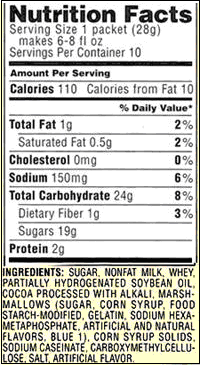

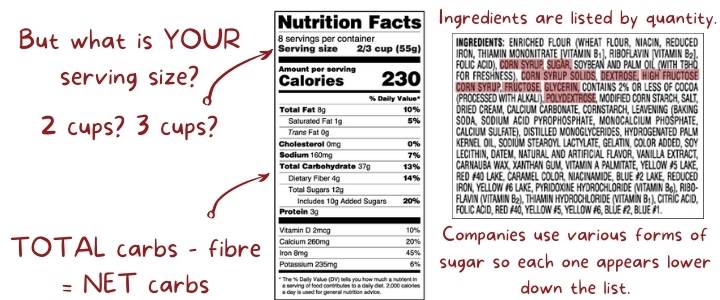
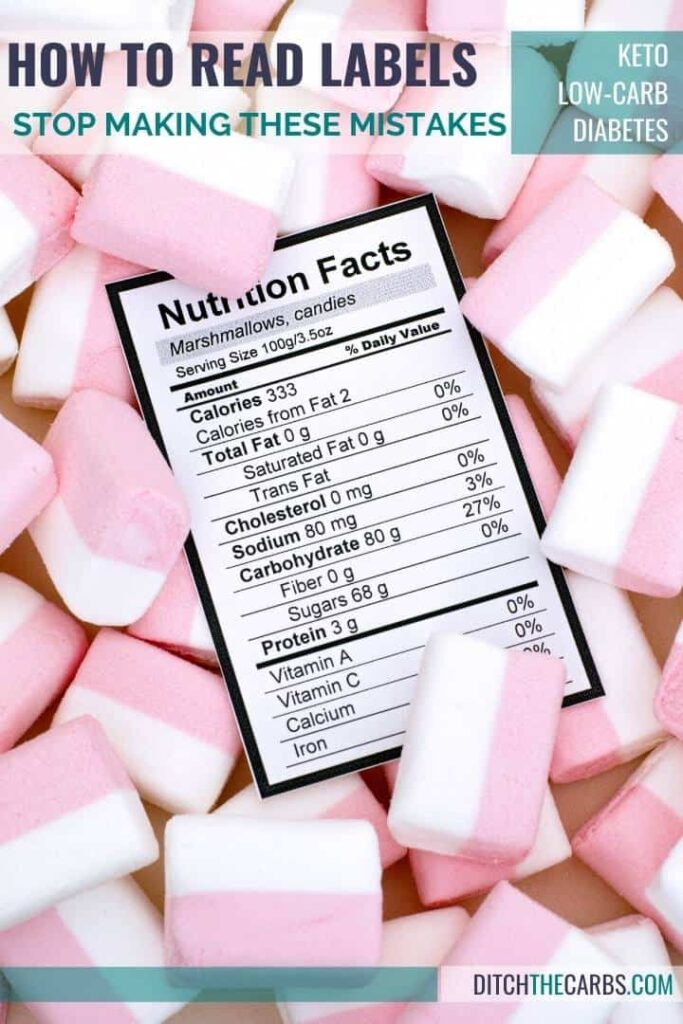
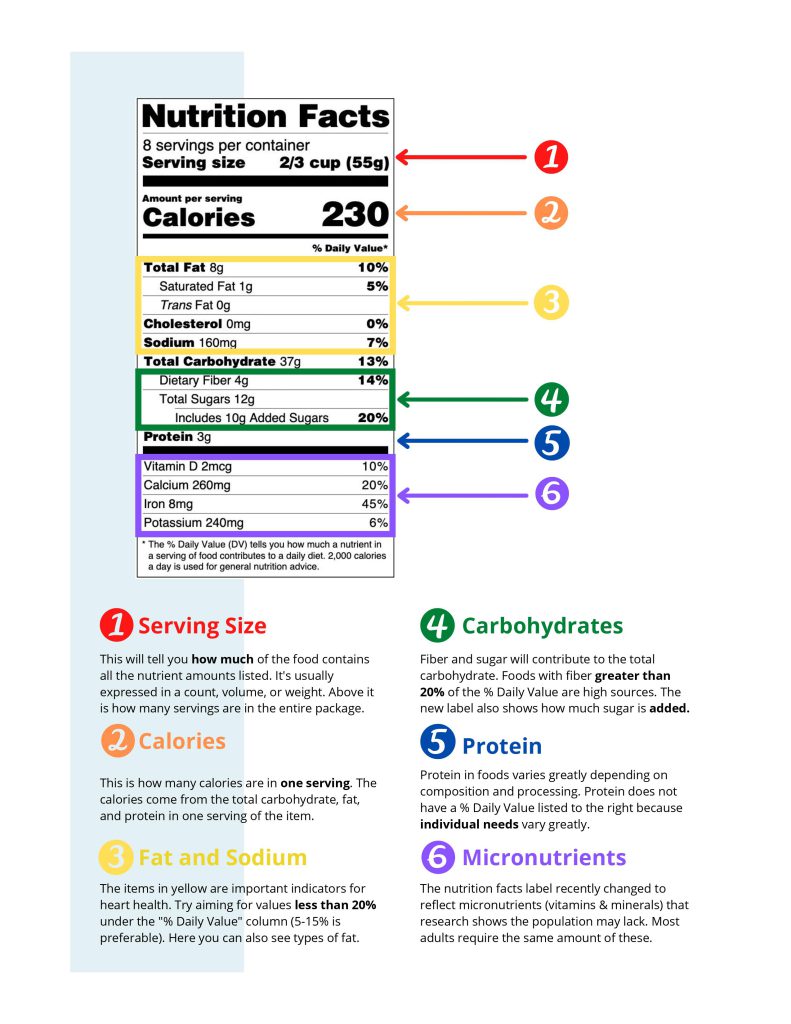



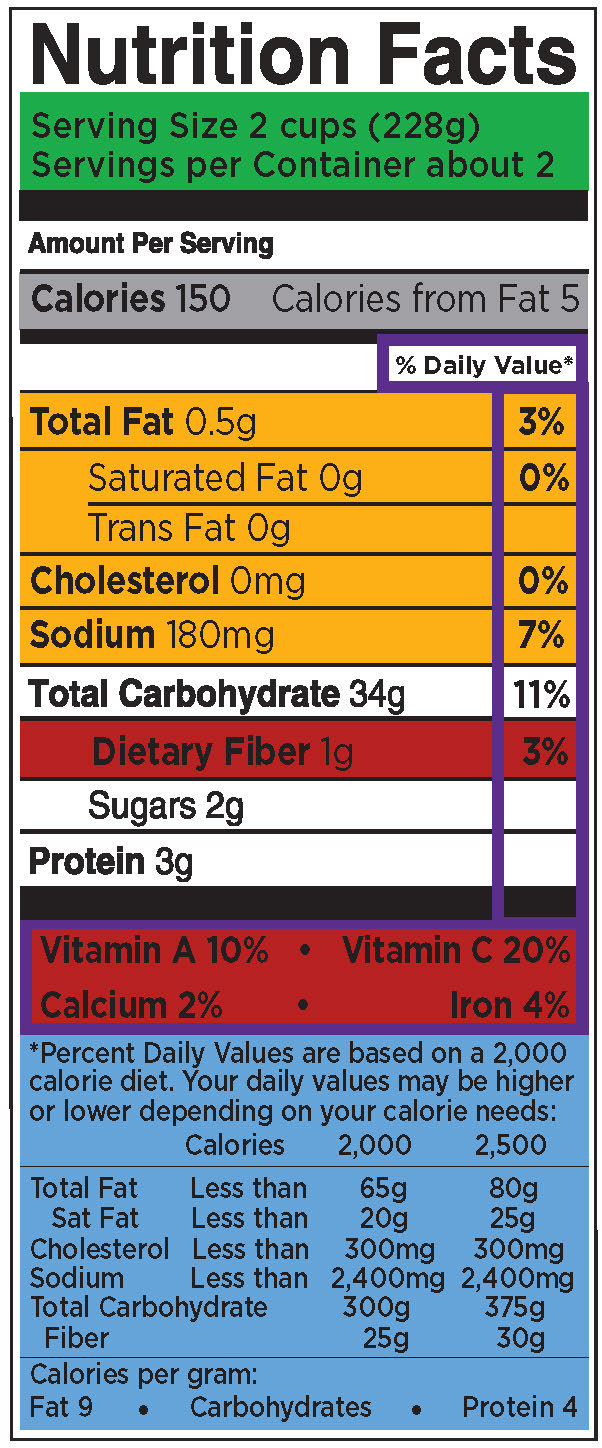
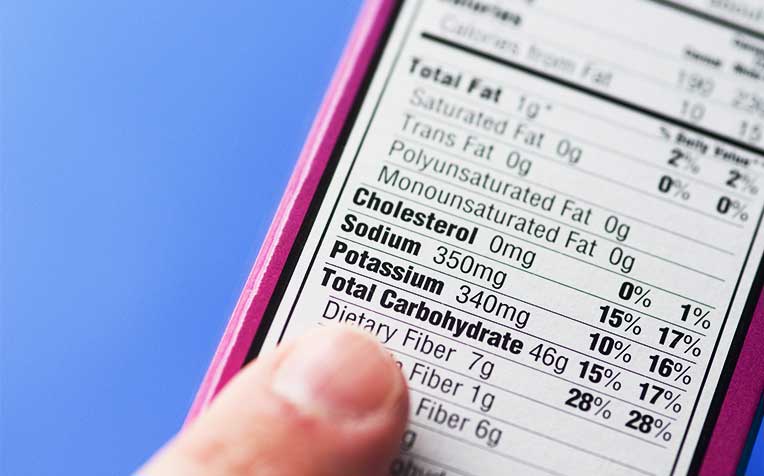


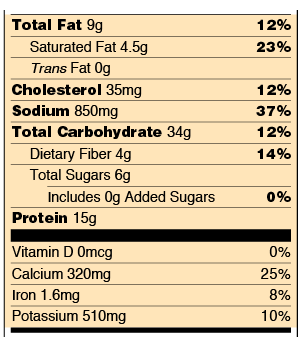


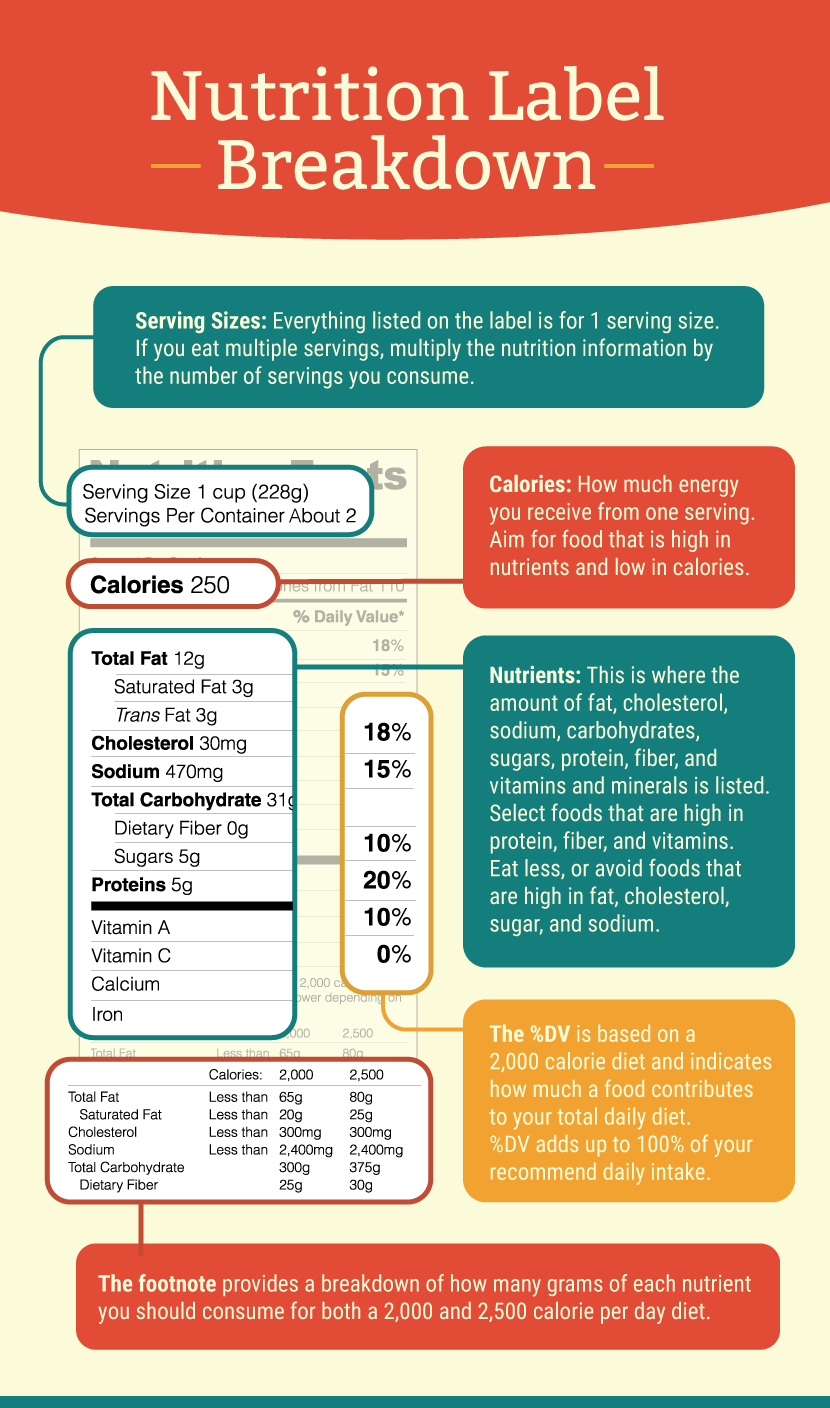
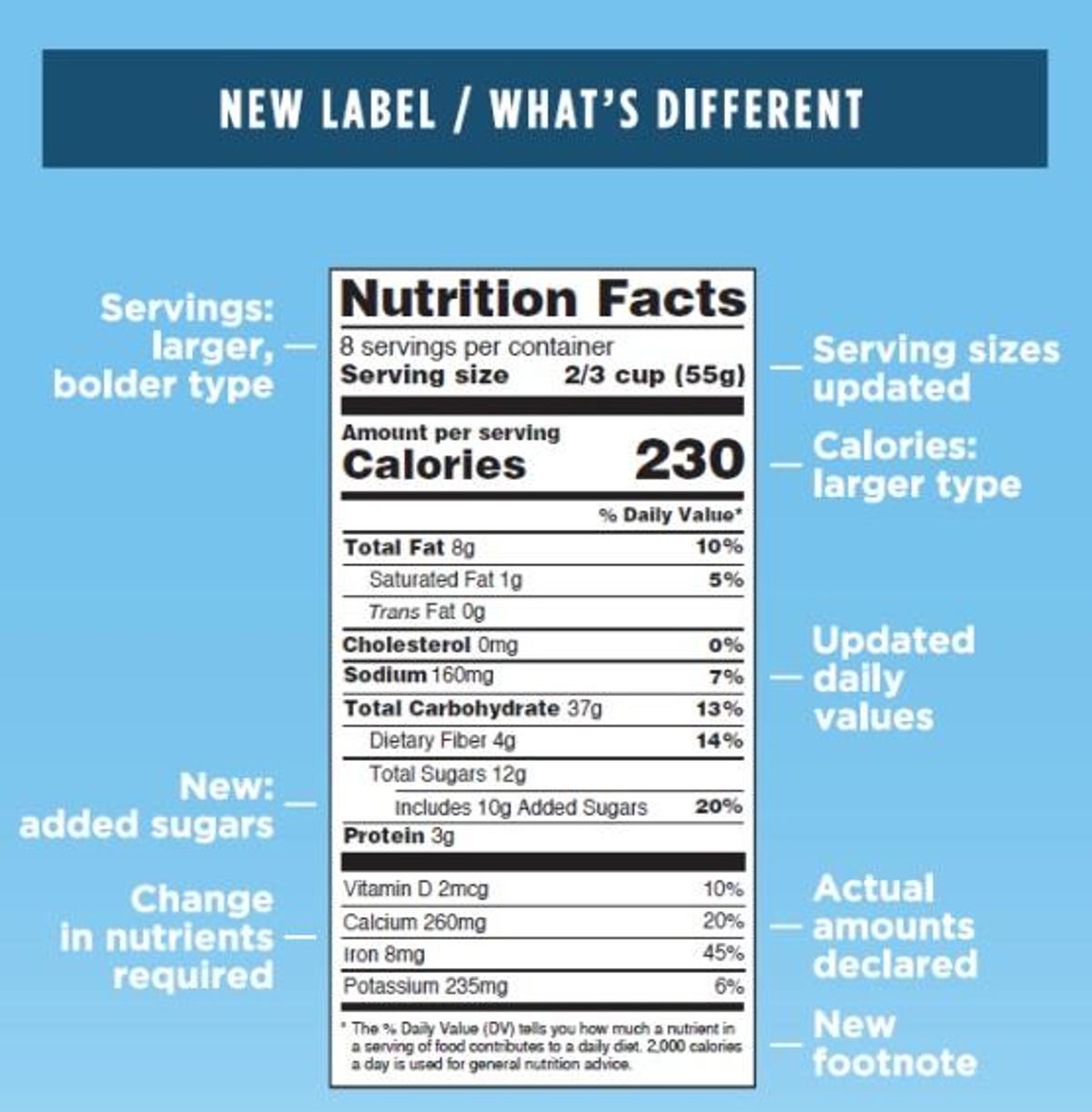
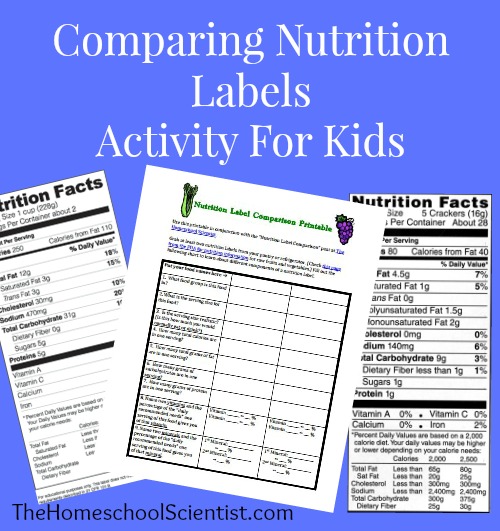

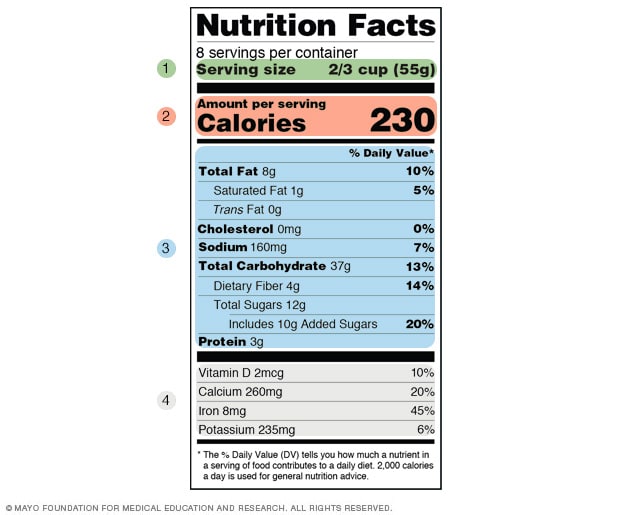
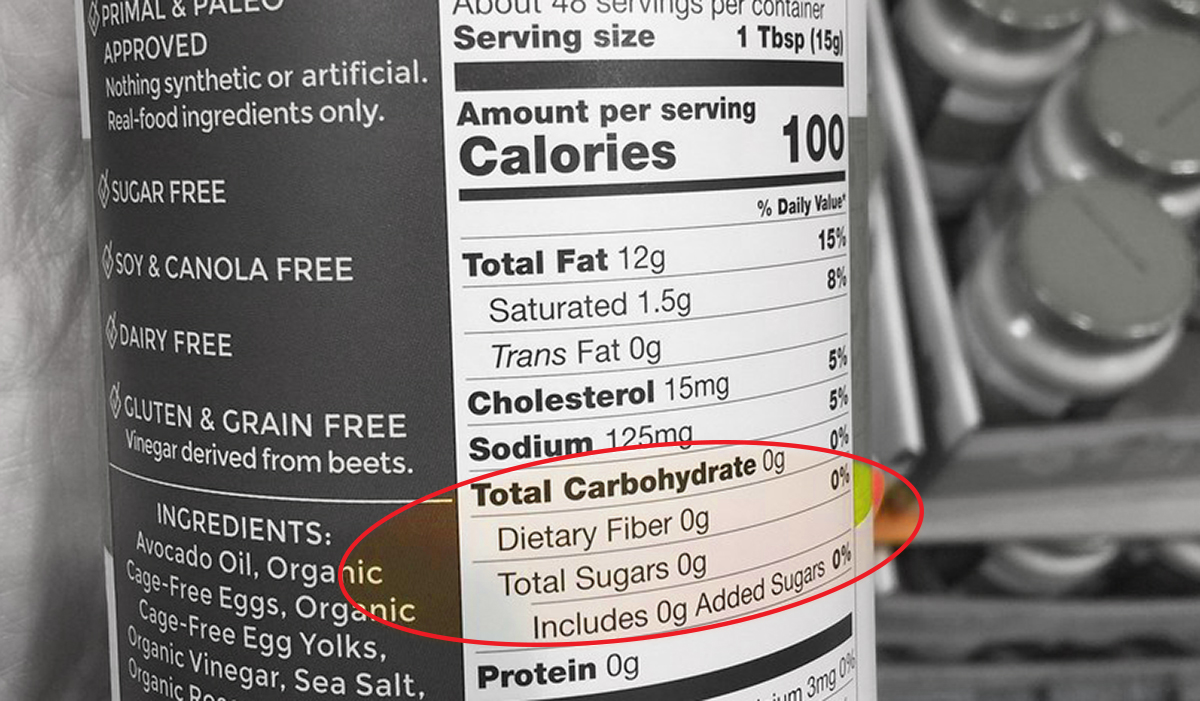

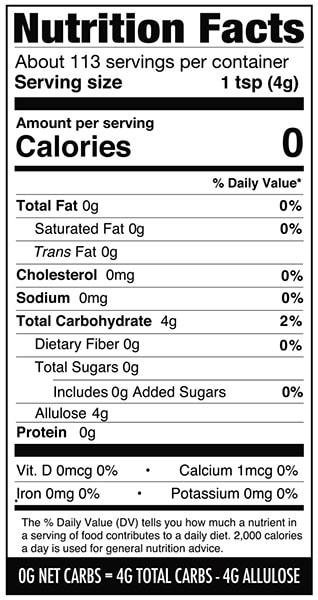




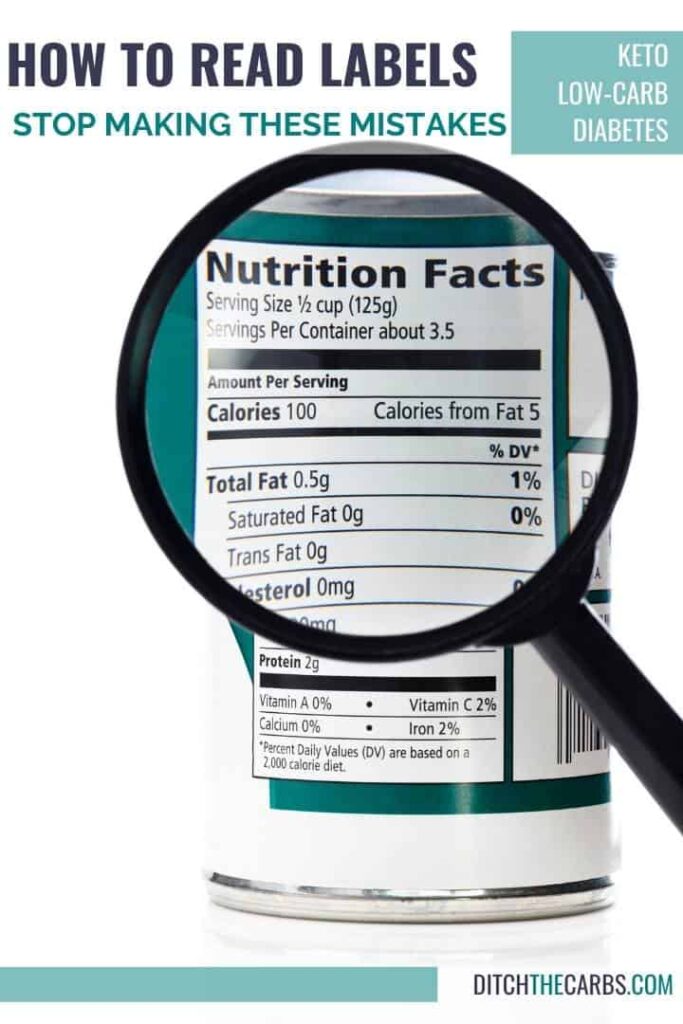
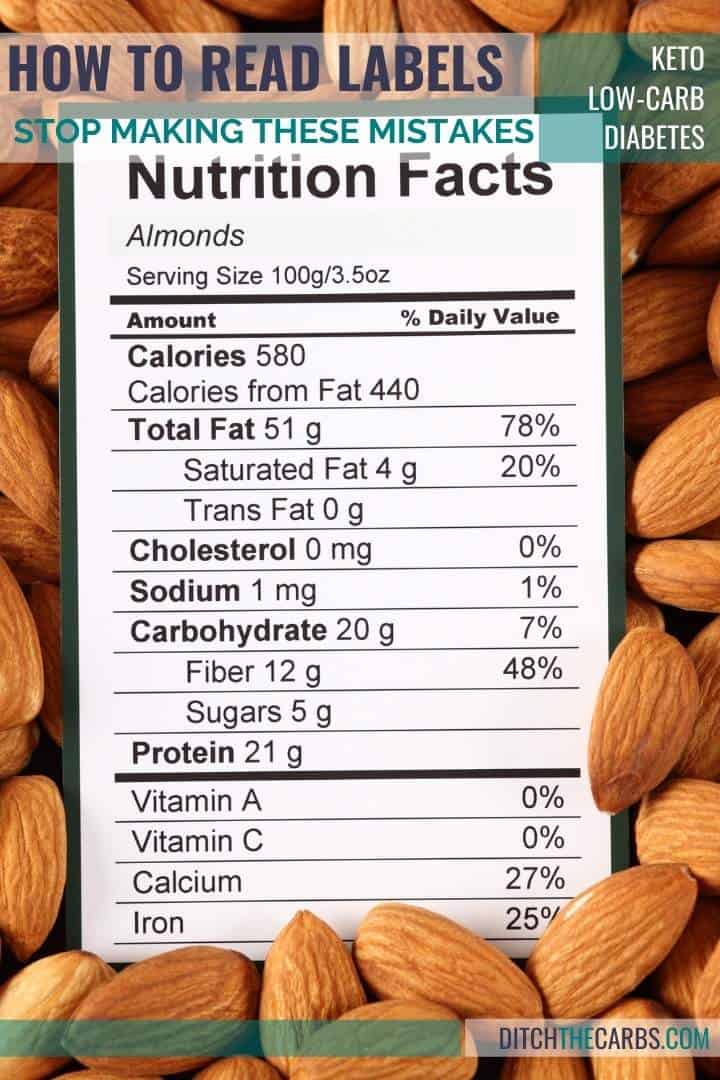
.png?width=1200&name=how%20to%20calculate%20net%20carbs%20(2).png)
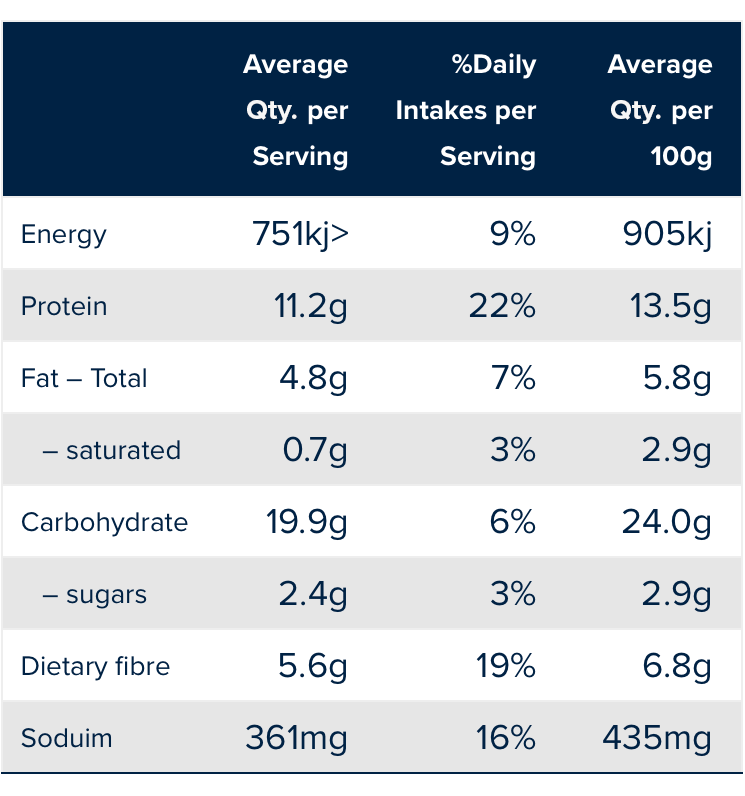
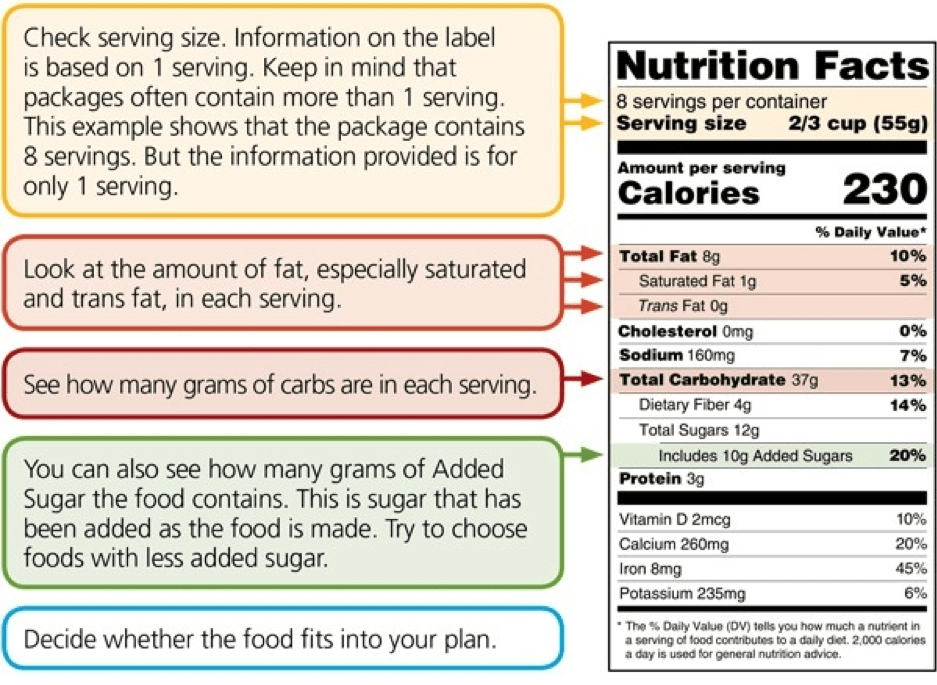
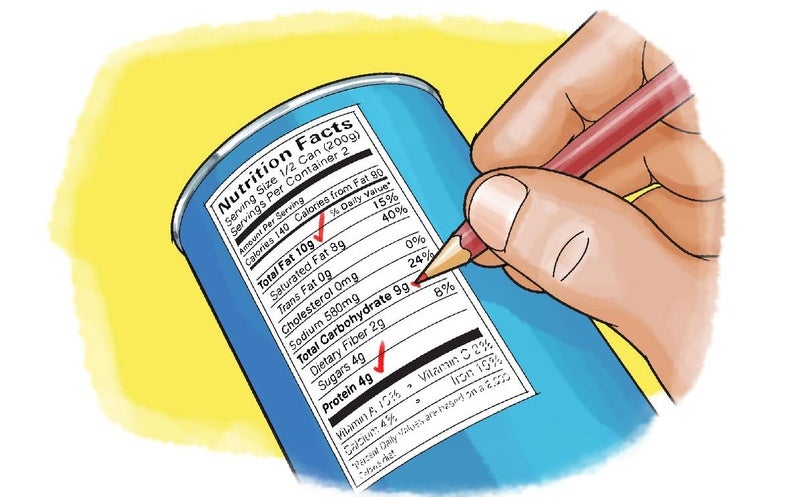

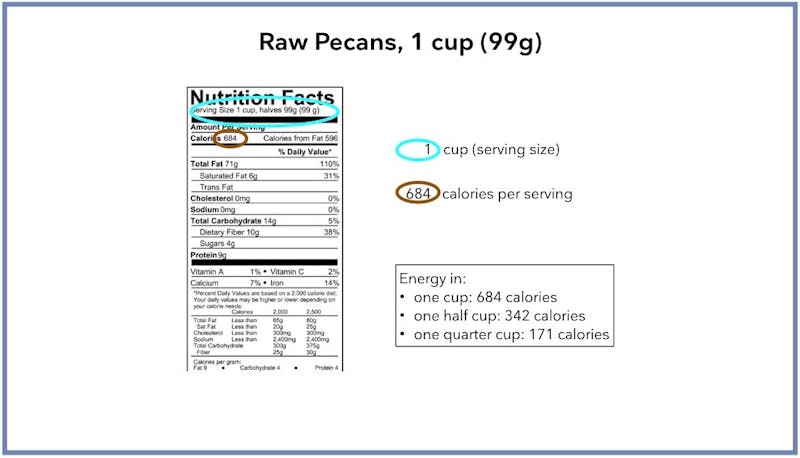





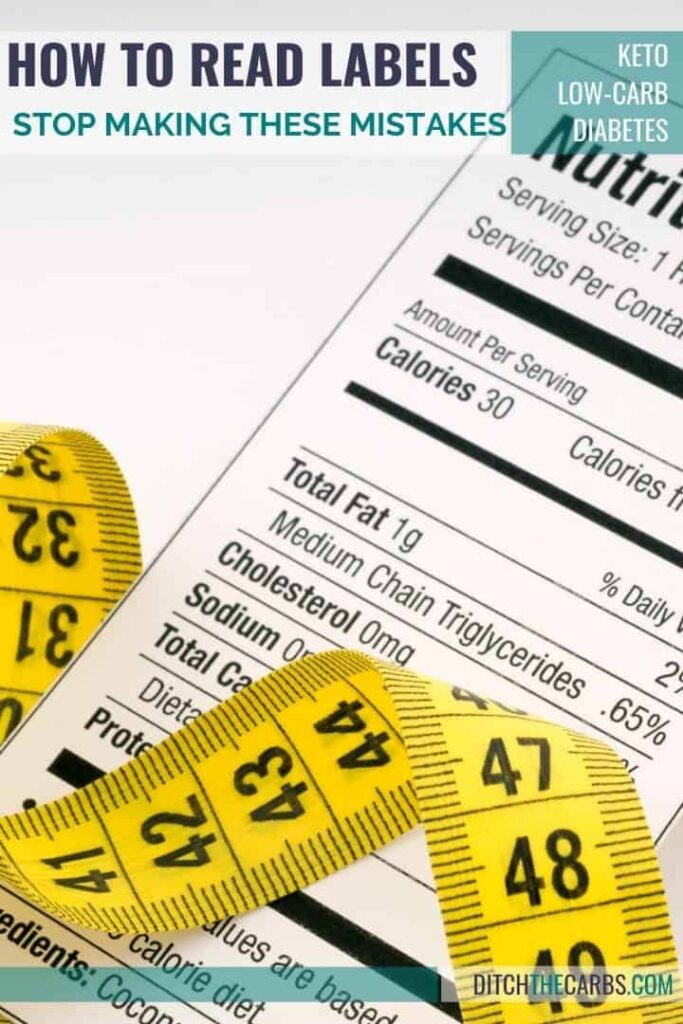
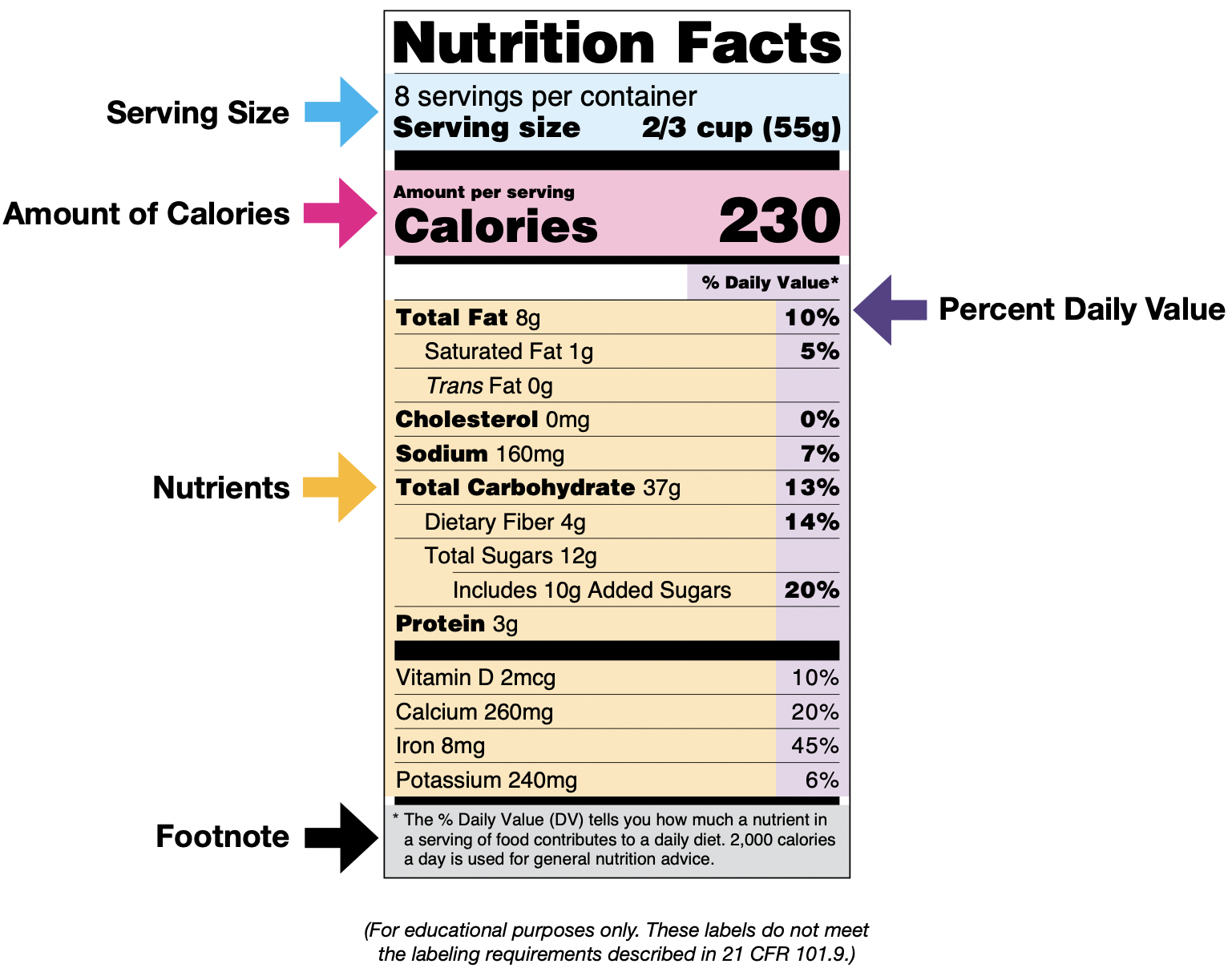
Post a Comment for "45 how to read food labels carbohydrates"